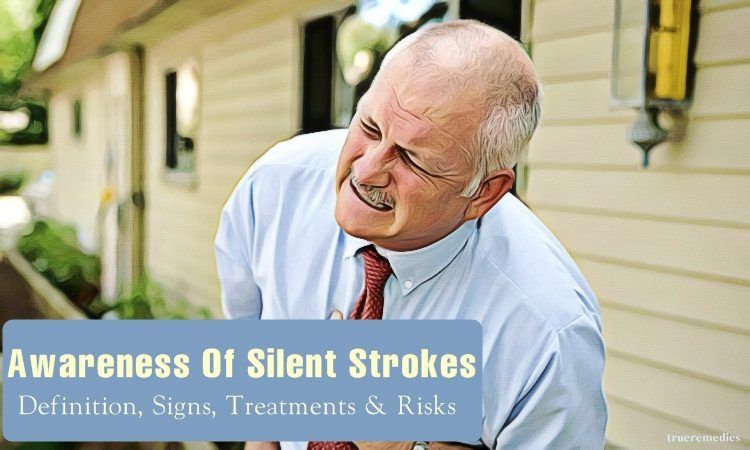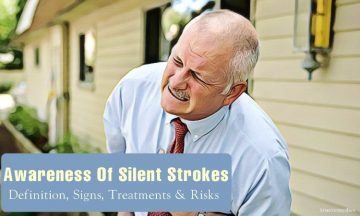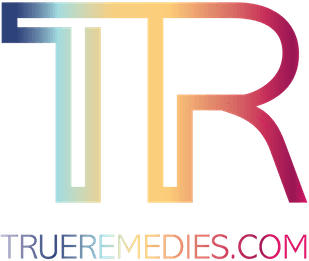Updated: 11/16/2019
Contents
- What Is A Silent Stroke?
- Do Subtle Symptoms Mean A Silent Stroke Is Less Dangerous?
- How To Diagnose Silent Strokes
- Who Is At Risk Of Silent Strokes?
- How Can You Know If You Have One?
- Can Silent Strokes Be Treated?
- Reduce The Risk Of Silent Strokes Within Your Control
- What To Do When You Have Silent Strokes
Mentioning a stroke(or asymptomatic cerebral infarction), you may think of a health problem that causes impaired speaking, remembering and moving. However, some strokes are hard to identify without apparent signs until they lead to cumulative damage. This issue is called silent strokes.
Canadian researchers have made a lot of reports and have found that silent strokes are very common nowadays; it affects about 0.5% of the 50 million seniors at the age of 65 or older each year.
In this article, Trueremedies would like to introduce to you awareness of silent strokes, including definition, signs, treatment, and risks, hence helping diagnose this issue soon.
- 12 Must-Remember Stroke Do’s And Don’ts For Stroke Patients
- 27 Tips How To Maintain A Healthy Heart Rate & Prevent Heart Disease
Awareness Of Silent Strokes: Definition, Signs, Treatments & Risks
What Is A Silent Stroke?
Silent strokes are the kind of strokes that have subtle symptoms and are difficult to address. However, more people are affected by silent strokes than ones with symptomatic strokes. And its occurrence rate is 14 times higher than strokes with obvious pronounce symptoms.
Because the signs of this problem are less noticeable, patients who suffer from it may not be aware of their health condition until several imaging tests have done.
TrueRemedies Partner Solutions

Need a Help from the Leading Expert Online, Available 24/7?
They’re all here and ready to answer your questions online or by phone. Keep asking questions until you get the answer you need.
You can't diagnose these strokes by eyes because they do not impact language or movement or cause immediately apparent changes. They can lead to a decrease and impairments in memory[1].
Do Subtle Symptoms Mean A Silent Stroke Is Less Dangerous?
Just because a silent stroke has silent symptoms does not mean they are not dangerous. Although unlike major strokes, silent strokes impact only a small area of the brain, the damage is cumulative and significant.
If not treated soon, this problem can lead to the trouble of remembering things and concentrating[2].
The worst consequence is also the increased risk of symptomatic stroke. Besides, it also puts you at risk of multi-infarct dementia or vascular dementia[3] [4] that is shown in the following symptoms:
- Emotional issues such as crying or laughing at inappropriate times
- Memory problems[5]
- Abnormal way of walking
- Getting lost even in your familiar places
- Losing bladder and bowel control
- Confusing in making decisions
How To Diagnose Silent Strokes
You may be unaware of or forget about their signs and symptoms of silent strokes. A silent stroke occurs when there is a sudden cutoff in the blood supply to a part of the brain, causing the loss of oxygen to your brain and leading to the damage of brain cells.
The effective way to diagnose whether a person had a silent stroke is taking an MRI or CT scan. These imaging tests will help the doctors notice any small damaged areas of the brain. For example, they show the lesions or white spots on the brain areas where brain cells stop functioning.
Who Is At Risk Of Silent Strokes?
Because a silent stroke is only diagnosed obviously via imaging tests, one of the best strategies for catching this problem is to know the risk factors and who are at high risk.
You will be vulnerable to silent strokes if you have these following major factors:
- High blood pressure (hypertension)
- Diabetes
- High cholesterol
- Stress
- Drug use
- Cerebrovascular disease
- Cigarette smoking
- Obesity
- Atrial fibrillation
- Sedentary lifestyle
How Can You Know If You Have One?
The doctor will see a brain MRI or CT scan to address a silent stroke. But you can tell whether you need to make an appointment with an experienced doctor by looking at these subtle signs that are often mistaken for the aging problem.
- Frequent falls
- Balance problems
- Changes in your mood
- Urine leakage
- Trouble thinking
Can Silent Strokes Be Treated?
So, what are the treatments of silent strokes?
Doctors often suggest rehabilitative therapies to help people who have lost some of their ability due to strokes. If you are diagnosed with silent strokes, professionals, including speck pathologists, physical therapists, psychologists, and sociologists, will help.
Some doctors may give Alzheimer’s medications to patients with strokes and dementia. There isn’t enough proof that shows the link between these medications and treatments of silent strokes. Further researches and studies are needed to find the best solutions for this problem in the future.
Reduce The Risk Of Silent Strokes Within Your Control
The damage and consequences of silent strokes can be avoided if we know how to monitor and control the risk factors.
According to the CDC, healthy lifestyle changes can reduce the stroke risk of up to 80 percent. Here are small practical things you can do to prevent silent strokes:
- Control blood pressure: According to researchers, high blood pressure increases your risk of a silent stroke[6].
- Exercise: 30 minutes of doing moderate exercise four or five days a week can reduce the chances of getting a silent stroke[7].
- Reduce salt intake: Decreasing your sodium intake will reduce the risk of high blood pressure and strokes[8]. Avoid eating pre-packaged and frozen foods because they have up to 70 percent of sodium intake.
- Lower cholesterol levels: The ideal overall cholesterol level should be under 200 mg/dL. HDL cholesterol should be 60 mg/dL or higher while LDL cholesterol needs to be under 100 mg/dL.
- Keep your weight in control: The normal body mass index is between 18.5 and 24.9.
- Give up the smoking habit
- Choose the diet drinks: It is important to avoid drinking any artificially sweetened drinks because they double the risk of strokes and dementia[9] [10].
- Control of diabetes
- Consume more veggies: It is recommended eating five or more servings of vegetables and fruits each day to have good health and decrease the risk of strokes.
What To Do When You Have Silent Strokes
Silent strokes can lead to impaired cognitive abilities and memory. Besides applying treatments of silent strokes, there are several things you can do to slow down the growth of these significant consequences and damage.
- Practice habits of completing certain tasks during the day
- Place things you need like keys and medication in the same spot
- Make instruction lists and to-do lists to remember the process or steps of doing something complicated
- Keep a pillbox with you
- Play memory games to strengthen your skills and ability
- Set up scheduled direct payments of your bills so, you do not need to remember the due dates
A silent stroke and other types of strokes, such as ischemic strokes, ministrokes, and hemorrhagic strokes, are dangerous medical conditions. Therefore, if you experience any signs and symptoms of strokes, go to the doctor and get medical attention immediately.
Even if you aren’t experiencing any obvious symptoms, you should meet your doctor regularly to build a plan for lowering the risks and preventing this issue.
The content provided is for informational purposes only. Therefore, always seek professional advice, treatments, and diagnosis from your experienced physician and qualified health provider for any medical condition. If you find this article “Awareness Of Silent Strokes: Definition, Signs, Treatments & Risks” useful and informative, please share your opinions in the comment section. We will answer your questions as soon as we can. For other articles, visit our News & Facts page.
Read more: 25 Home Remedies For Depression, Anger & Stress Symptoms. This article was medically reviewed/fact checked by Dr Perpetua Neo (DClinPsy, UCL; MPhil, Cambridge).









